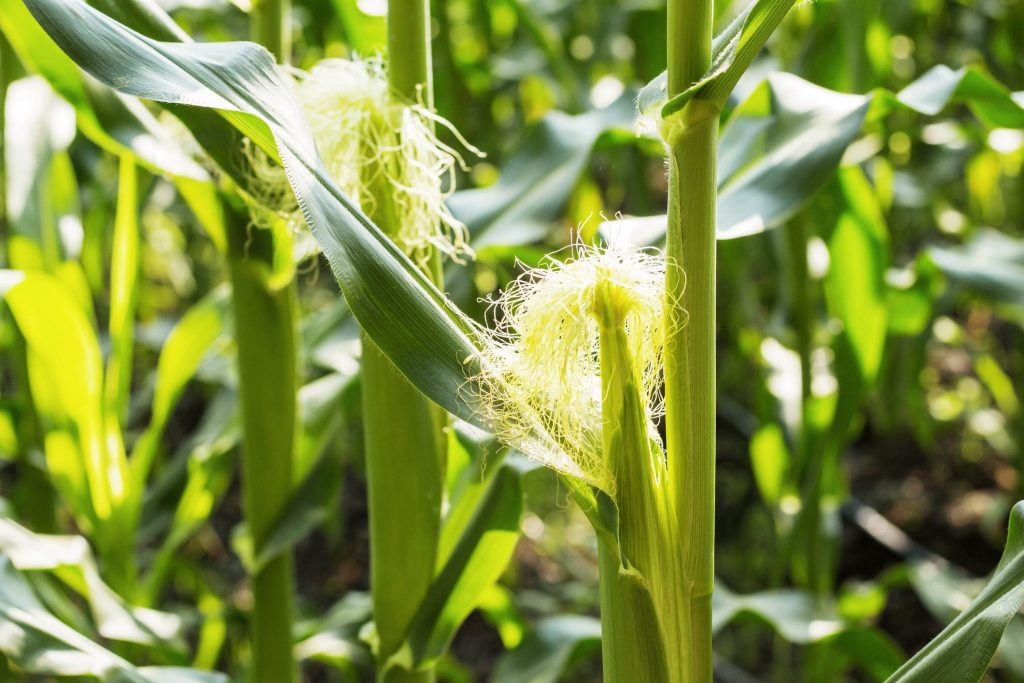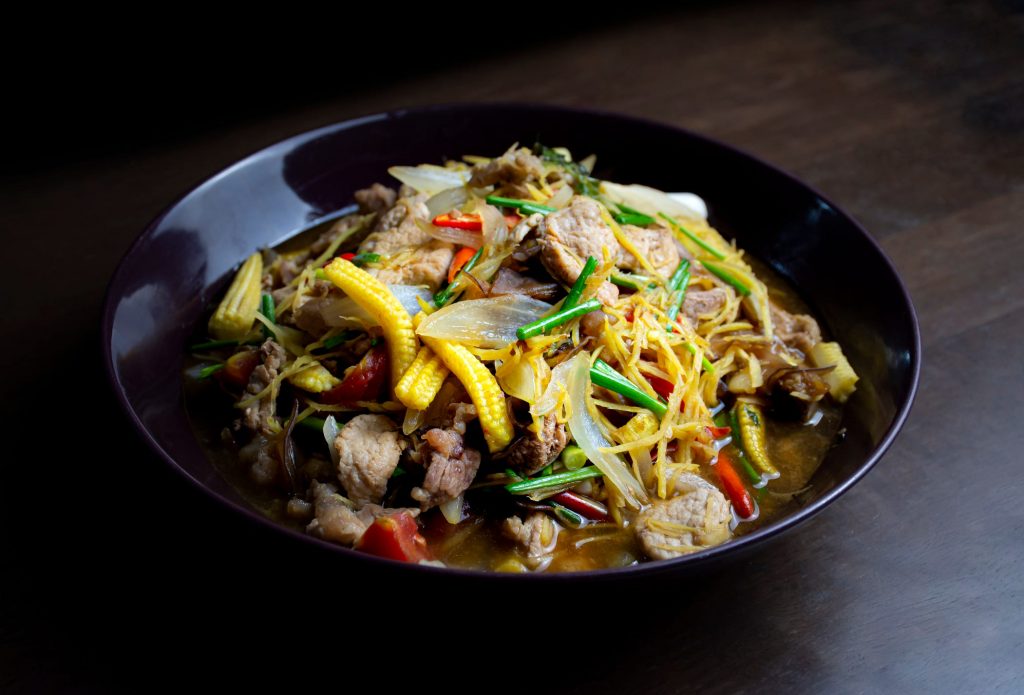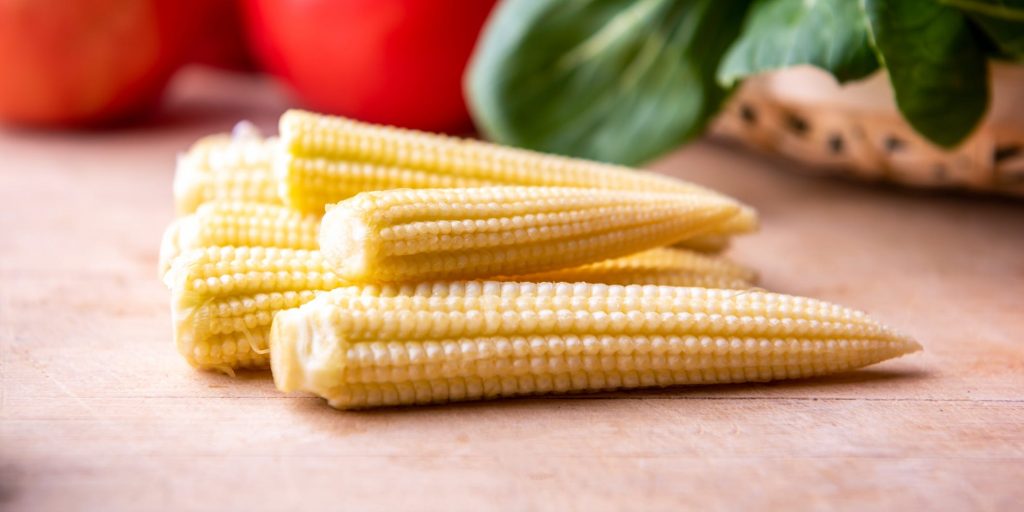- Baby corn is the immature form of regular corn on the cob.
- Thailand is the main exporter of baby corn.
- It's mild in flavor with a crunchy texture, and works well in soup, salads, stir fries, and curries.
You've probably spotted baby corn in a can on the grocery store shelves. Or maybe you've crunched into a few mini cobs while eating your favorite lunch. But what exactly is baby corn, and where does it come from?
Baby corn is essentially the immature version of corn that farmers harvest when the emerging corn silks are about 2 to 3 inches, says Jareeporn Kumruk, large seed vegetable product development specialist for Syngenta Seeds.
Unlike regular mature corn, you can eat baby corn in its entirety, cob and all. It's a common ingredient in Thai cuisine and stir fries, but you can use this versatile, mild-tasting ingredient in almost any style of cooking.
What is baby corn?
Baby corn looks like a miniature version of regular corn. You can eat it whole, which gives it a completely different texture than full-size corn. Aathit Promta, technical sales representative, vegetable seeds for Syngenta Seeds, describes the texture as crisp.
Although there are specialty corn varieties bred especially for growing baby corn that are made to grow more corn per stalk, growers can use any variety, whether sweet corn or field corn, to produce baby corn. The taste of immature corn varies very little between varieties, however, the texture does get tougher the longer you wait to harvest, says Kumruk.
Where does it come from and how is it grown?

Many corn varieties produce at least two ears of corn per stalk. "Originally, people on farms harvested the second ear of corn for cooking in their own household," says Promta. As farmers continued to use the immature vegetable in their cooking, people developed recipes, and its use became more widespread, Promta adds.
Most of the baby corn available in the US comes from Thailand. The main production areas are in central and western parts, such as Nakhon Pathom, Suphanburi, and Kanchanburi, as well as the northeastern areas, such as Nakhon Ratchasima and Chaiyaphum, says Promta.
Growing baby corn isn't much different than growing regular corn, a warm-season crop that requires full sun. Farmers harvest full-size corn when the silks at the ends of the husks turn brown, up to 100 days from planting. "Baby corn needs a good water supply due to its short production period," says Kumruk. Harvesting typically takes place about 50 to 60 days after planting seeds.
Most of the baby corn exported to Europe and the US is sold in cans to avoid spoilage. But there's also a demand for fresh baby corn domestically and abroad in countries like Taiwan and Japan, says Promta.
How is baby corn different from regular corn?
The size, texture, and taste are the main differences between baby corn and full-size corn. Because baby corn is immature, the hard cob has yet to develop fully, allowing you to eat the vegetable whole.
When growing baby corn, producers tend to favor corn varieties with a long, slender shape with a creamy yellow color, says Promta.
What does baby corn taste like?
Baby corn is much milder than full-grown corn. You might hear people describe the flavor of fresh baby corn as slightly sweet and grassy, veering to almost neutral. This is because baby corn is harvested before the build-up of sugars, which happens after pollination. Canned baby corn may be harder to detect layered flavor notes since the product isn't as fresh.
How to use baby corn

Because of its crunchy, pleasing texture and mild flavor, baby corn makes a great addition to many dishes. You can:
- Add fresh chopped bits to salads.
- Toss canned pieces into creamy coconut milk-based soups.
- Serve tempura-fried baby corn as appetizers.
- Add whole baby corn, fresh or canned to spicy stir fries.
- Lightly grilled cobs to serve as a side dish.
- Stir cut up baby corn into flavorful curries.
- Offer pieces as an option for dipping into hot pot or fondue.
Insider's takeaway
Baby corn is the tender, crisp, mild-tasting, immature version of regular corn. Thailand is the
largest exporter of this succulent vegetable, and it can be used in various dishes from stir fries to salads. You can find it in your grocer's canned or frozen vegetable section. Corn producers at your local farmer's market may also have some on hand.
